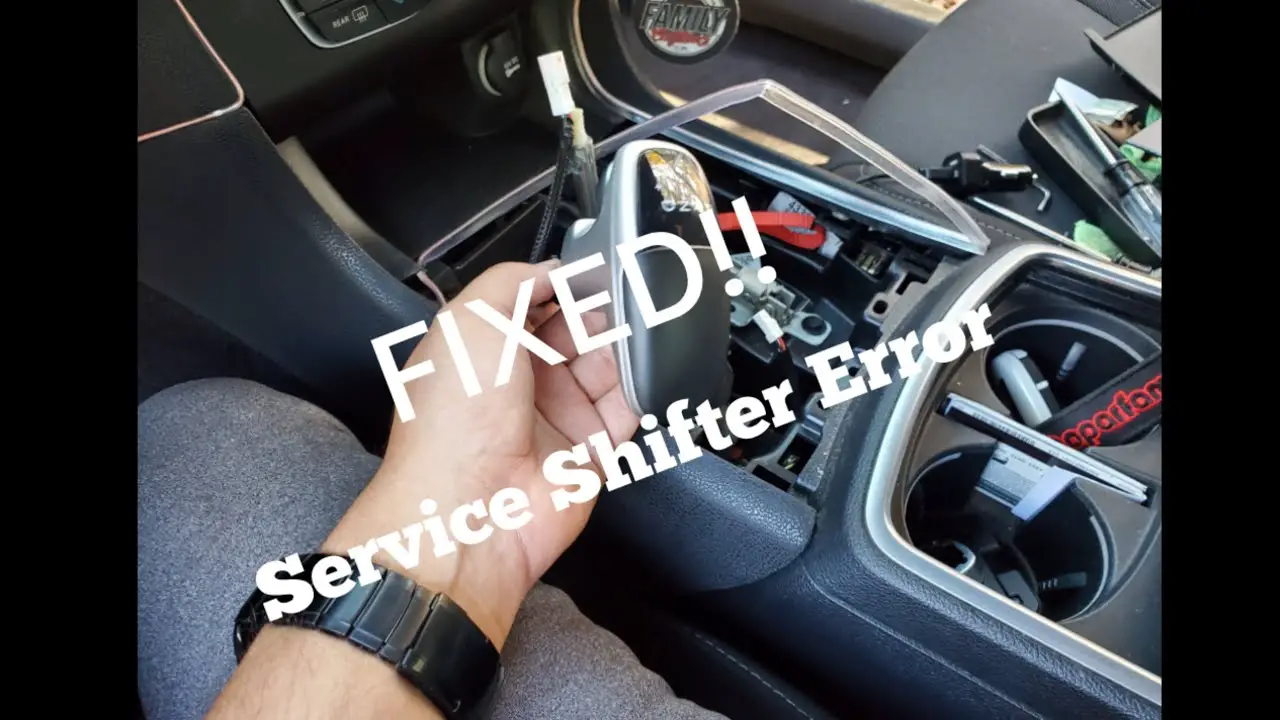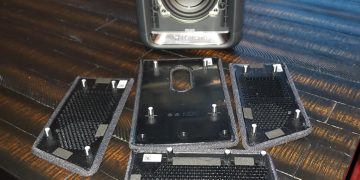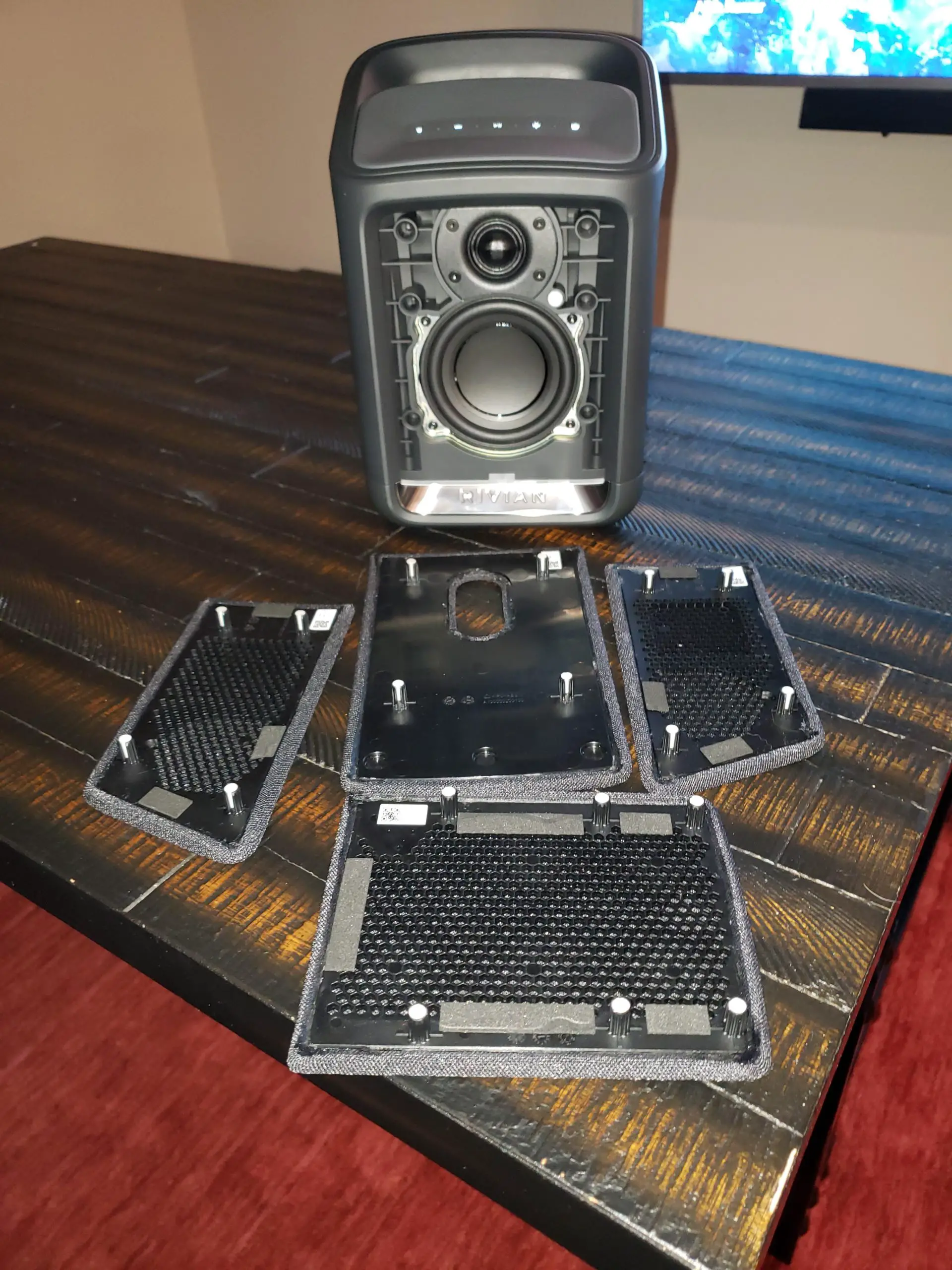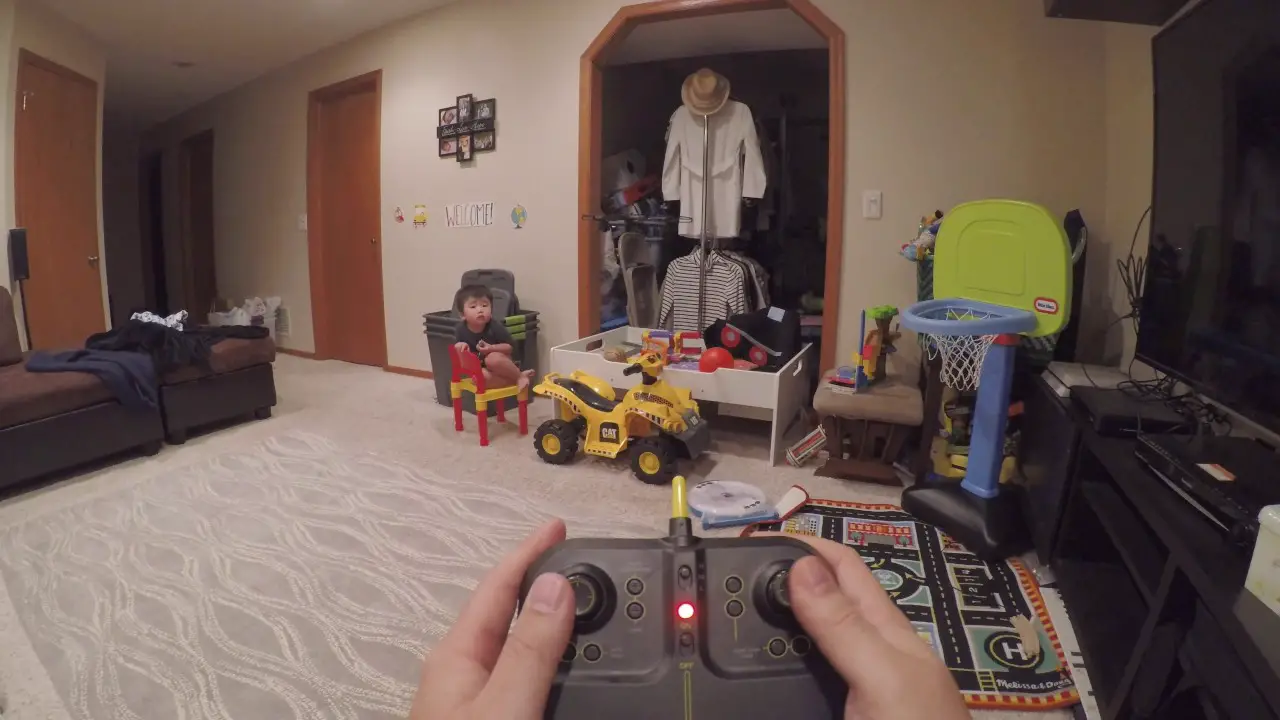To fix the service shifter in a Dodge Charger, start by checking the transmission fluid level and condition. If the fluid is low or dirty, it may be causing shifting problems.
Next, inspect the shifter cable and linkage for any damage or wear. Adjust or replace as necessary. Finally, reset the shifter module by disconnecting the battery for 10 minutes to clear any error codes. Fixing the service shifter in a Dodge Charger requires a few simple steps that can be done at home.
From checking the transmission fluid to inspecting the shifter cable and resetting the shifter module, this guide will help you troubleshoot and fix the issue. By following these steps, you can ensure smooth and efficient shifting in your Dodge Charger.
Table of Contents
ToggleIdentifying Shifter Issues
When your Dodge Charger experiences problems with the shifter, it can be frustrating and potentially dangerous. Identifying the signs of a faulty shifter, understanding common error messages, and recognizing the impact of temperature on shifter performance are crucial in addressing and rectifying the issue effectively.
Symptoms Of A Faulty Shifter
The first step in identifying a shifter issue is to recognize the symptoms associated with a faulty shifter. Below are some common signs that indicate an issue with the shifter:
- No response or delay when shifting into gear
- Difficulty in shifting between gears
- Shifter stuck in park or other gear positions
- Unusual noises or vibrations when shifting
- Warning lights illuminated on the dashboard related to the transmission
Common Error Messages
In addition to the physical symptoms, a faulty shifter can trigger error messages on the dashboard. Some of the common error messages associated with shifter issues include:
- Transmission Malfunction: Service Shifter – This message indicates a potential problem with the shifter that requires attention from a qualified technician.
- Shift to P before turning off engine – This error message often occurs when the shifter fails to register the correct position, prompting the need to ensure the vehicle is in the park position before turning off the engine.
Impact Of Temperature On Shifter Performance
Temperature fluctuations can significantly affect the performance of the shifter in your Dodge Charger. Extreme temperatures, whether hot or cold, can impact the functionality of the shifter mechanism. For instance, in colder climates, the shifter may become stiff or unresponsive, making it challenging to shift between gears. Similarly, in excessively hot conditions, the shifter may exhibit erratic behavior, such as difficulty in staying in the selected gear.
By identifying these common signs and messages, understanding the potential impact of temperature variations, and taking proactive measures to address shifter issues, you can ensure the smooth and reliable operation of your Dodge Charger’s shifter system.
Diagnosing The Problem
Before fixing the service shifter in your Dodge Charger, it’s crucial to accurately diagnose the issue. Proper diagnosis saves time and ensures that the correct solution is applied. Here’s how to go about it:
Tools Needed For Diagnosis
Before starting the diagnostic process, gather the necessary tools. These may include a diagnostic scanner, multimeter, and wrench set. A diagnostic scanner is essential for retrieving trouble codes from the vehicle’s onboard computer. The multimeter helps in testing electrical components, while the wrench set is useful for accessing and inspecting specific parts.
Step-by-step Diagnostic Process
When diagnosing a service shifter problem in your Dodge Charger, follow a systematic approach:
- Begin by connecting the diagnostic scanner to the vehicle’s OBD-II port to retrieve trouble codes.
- Inspect the shifter mechanism for any visible signs of damage or wear, such as broken cables or loose connections.
- Use the multimeter to check the continuity and resistance of the shifter solenoid and other electrical components.
- Perform a thorough visual inspection of the shift interlock system, including the shift lock solenoid and associated wiring.
- Test the brake light switch to ensure it is functioning properly, as it plays a vital role in the operation of the shifter interlock system.
- Finally, conduct a comprehensive check of the vehicle’s transmission control module (TCM) and associated wiring harness for any faults or damage.
When To Seek Professional Help
If the diagnostic process reveals complex electrical or mechanical issues beyond your expertise, it’s advisable to seek professional help. A certified mechanic or automotive technician can provide advanced diagnostic services and undertake the necessary repairs with precision.
Service Shifter Repair Guide
When your Dodge Charger’s shifter starts to malfunction, it’s essential to address the issue promptly. Delaying the repair can lead to safety concerns and inconvenience. In this guide, we’ll provide you with a comprehensive service shifter repair guide to help you fix the problem efficiently and effectively.
Necessary Replacement Parts
If you’re planning to repair the service shifter of your Dodge Charger, it’s crucial to ensure you have the necessary replacement parts. Below is a list of the parts you may need:
- Shifter cable
- Shift interlock solenoid
- Transmission shift cable bushing
- Shifter assembly
Detailed Repair Instructions
Follow these detailed repair instructions to fix the service shifter of your Dodge Charger:
- Start by disconnecting the negative battery cable to ensure safety during the repair process.
- Locate the shifter cable and shift interlock solenoid beneath the shifter assembly.
- Inspect the shifter cable and shift interlock solenoid for any signs of damage, wear, or misalignment.
- If any of the components are faulty, remove them carefully and replace them with the new parts.
- Reassemble the shifter assembly and securely connect the negative battery cable.
- Test the shifter to ensure it functions smoothly before using the vehicle.
Safety Precautions During Repair
When repairing the service shifter of your Dodge Charger, it’s essential to prioritize safety. Here are some safety precautions to consider:
- Wear protective gloves and eyewear to prevent injury while handling components.
- Always work in a well-ventilated area to avoid inhaling harmful fumes from the vehicle.
- Use proper tools and equipment to ensure secure disassembly and reassembly of the components.
- Follow the manufacturer’s guidelines and safety instructions while performing the repair.
Troubleshooting After Repairs
After conducting the necessary repairs on the service shifter of your Dodge Charger, it is essential to perform troubleshooting to ensure that the issue has been completely resolved. This stage involves testing the functionality of the shifter and addressing any potential post-repair issues that may arise.
Testing The Shifter Functionality
Upon completing the repair process, it is crucial to verify the functionality of the shifter to ensure its smooth operation. Follow these steps to conduct a comprehensive test:
- Start the vehicle and allow it to idle.
- Engage the foot brake and shift the shifter through each position, including park, reverse, neutral, and drive.
- Ensure that the shifter smoothly transitions between each gear without any resistance or unusual noises.
- Verify that the gear display on the dashboard corresponds accurately with the selected gear.
Common Post-repair Issues
After repairing the service shifter, you may encounter certain common post-repair issues, such as:
- Difficulty in shifting between gears
- Dashboard indicator not reflecting the correct gear selection
- Unresponsive shifter controls
Solutions To Potential Problems
When faced with the aforementioned post-repair issues, consider implementing the following solutions:
- Inspect the shifter linkage for any misalignments or restrictions, and adjust as necessary.
- Check the electrical connections associated with the shifter for any loose or damaged wires, and repair or replace them accordingly.
- Examine the transmission fluid levels and condition, topping up or flushing as needed to ensure proper shifter function.
- If the dashboard indicator is inaccurate, recalibrate or replace the gear position sensor to address the discrepancy.
Maintaining Your Shifter
Proper maintenance of your Dodge Charger’s shifter is crucial for ensuring smooth and reliable performance. By following a few simple tips, you can reduce wear and tear and prolong the lifespan of your shifter.
Regular Maintenance Tips
Regular maintenance is key to keeping your shifter in top condition. Here are some essential tips to follow:
- Inspect and clean: Regularly inspect the shifter for any signs of debris or damage. Clean it with a soft cloth to remove dirt and grime that can affect its performance.
- Lubrication: Apply a small amount of lubricant to the shifter mechanism as recommended in your vehicle’s manual to ensure smooth operation.
- Check for loose components: Periodically check for any loose or worn components and tighten or replace them as needed to prevent further damage.
Reducing Wear And Tear
Reducing wear and tear on your shifter is essential for maintaining its functionality. Here are some tips to help reduce wear and tear:
- Avoid aggressive shifting: Refrain from harsh or aggressive shifting, as this can put unnecessary strain on the shifter components.
- Allow time to warm up: Give your vehicle a few minutes to warm up before engaging the shifter, especially in cold weather, to reduce strain on the components.
- Proper usage: Use the shifter according to the manufacturer’s guidelines to prevent premature wear and tear.
Long-term Care For Dodge Charger Shifters
Ensuring long-term care for your Dodge Charger shifter will help extend its lifespan and maintain optimal performance. Consider the following steps:
- Professional inspection: Schedule periodic inspections with a qualified technician to detect any potential issues and address them before they escalate.
- OEM parts: When replacement parts are needed, use genuine OEM parts recommended by the manufacturer to ensure proper fit and functionality.
- Proactive repairs: Address any issues promptly rather than letting them linger, as this can prevent further damage and costlier repairs down the line.
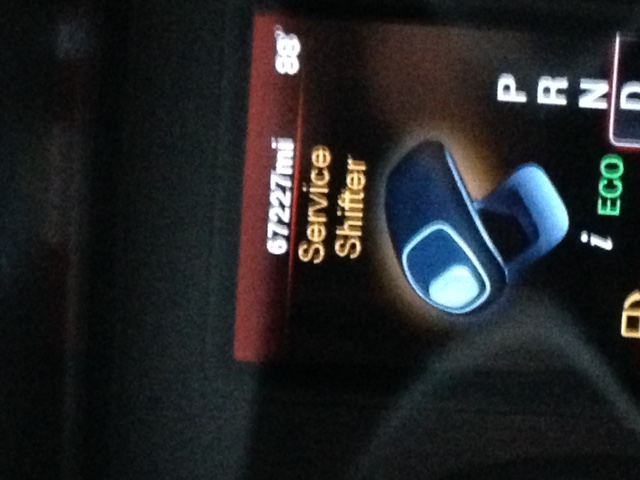
Credit: www.carcomplaints.com
Frequently Asked Questions Of How To Fix Service Shifter Dodge Charger
What Are The Common Signs Of A Shifter Problem In A Dodge Charger?
If you experience difficulty shifting gears, hear strange noises while shifting, or have a stuck shifter, these are common signs of a shifter problem in a Dodge Charger. It’s essential to address these issues promptly to prevent further damage.
How Can I Diagnose A Shifter Problem In My Dodge Charger?
To diagnose a shifter problem in your Dodge Charger, check the shifter cable, transmission fluid level, and inspect for any visible damage. Consult your vehicle’s manual for specific instructions on conducting a proper diagnosis or seek professional assistance for an accurate evaluation.
What Are Some Diy Tips To Fix A Shifter Problem In A Dodge Charger?
Some DIY tips to fix a shifter problem in a Dodge Charger include inspecting the shifter cable for damage or debris, ensuring proper transmission fluid levels, and checking for loose or broken connections. However, if you’re unsure, it’s best to seek professional assistance to avoid causing further damage.
Conclusion
To sum up, fixing the service shifter on your Dodge Charger is manageable with the right tools and know-how. By following the steps outlined in this guide, you can save time and money by troubleshooting and resolving the issue yourself.
Don’t hesitate to address this common problem and get your Dodge Charger back on the road.


